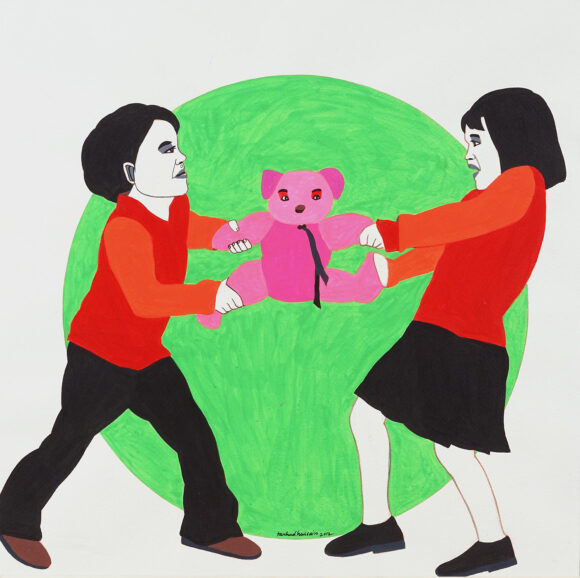Farhad Hussain
Farhad Hussain’s (b. 1975) paintings are like booby-trapped toys. Their vibrant colours, happy people and beaming smiles welcome the innocent viewer; their disarmingly simple figuration, their “ideal family” narrative, their palpable brightness seem to be just what the art teacher recommended for the uninitiated young. But as the viewer goes up close, he starts to feel uneasy. The innocuous turns insidious. For, isn’t there something unreal about them, something not quite right?
Aren’t the colours a little too vibrant, the people a little too showily happy, their smiles a little too beaming? Isn’t there something slightly diabolical about the brightness? It’s a brightness without shadows. The kind that boxes in a prisoner. In Hussain’s paintings, you get the feeling that a show may be on, or a film shoot, with lights and cameras trained on a carefully-blocked freeze where actors pose with artificial smiles on cue.
The work on view adds something interesting to his usual family scenes. If his depiction suggests that Muslims and Sikhs—and maybe Hindus—share a communal bonhomie, so do, in their own way, animals. The visitor sees this in the apparent misalliance of a fox and a dog who seem quite happy with each other. Hussain also adds music to the scene, a drum that the painted boys are playing.
On the surface, it’s the prescription of the Indian Constitution: different communities making music together. A kind of poster togetherness. But the slightly farcical edge to the gestures and the hint of a frenzy in the beating of the drum works up a low undertone of, yes, menace

